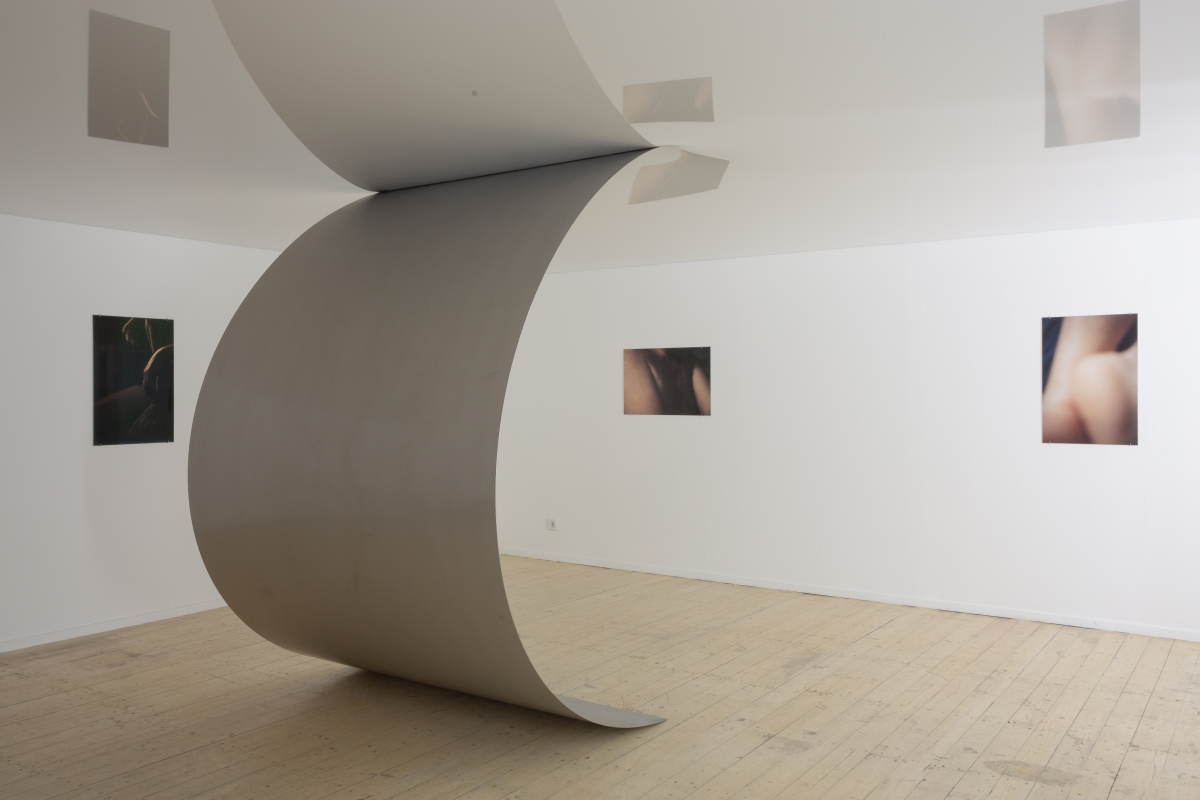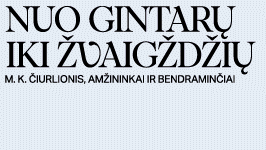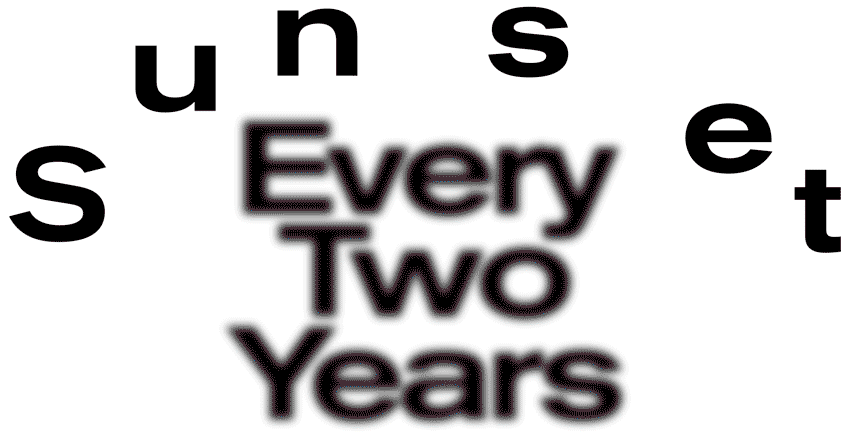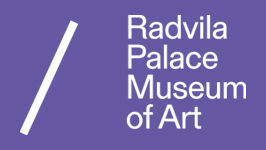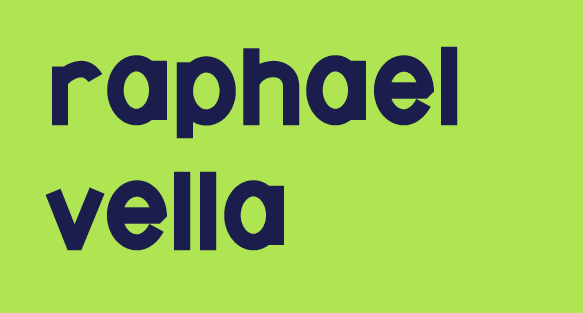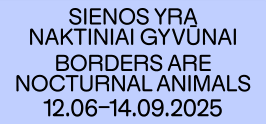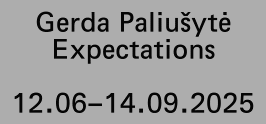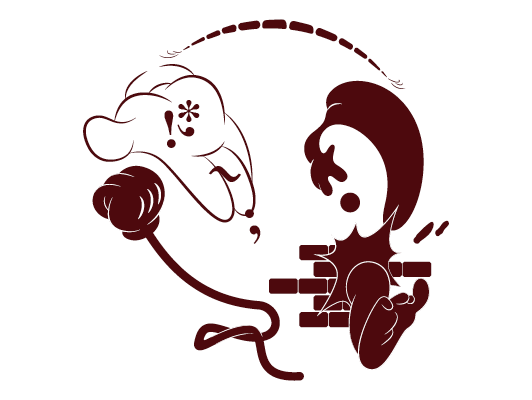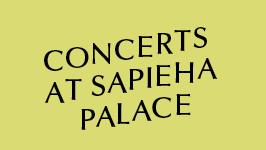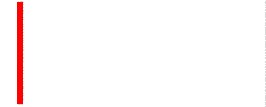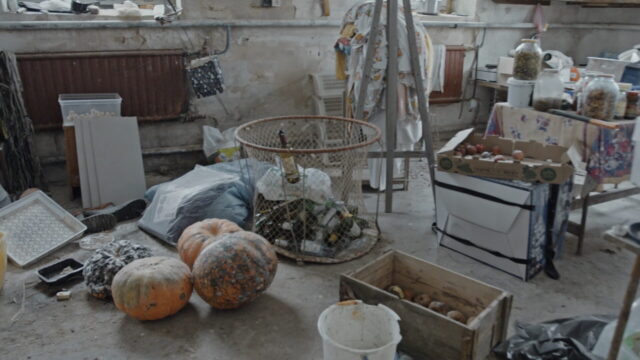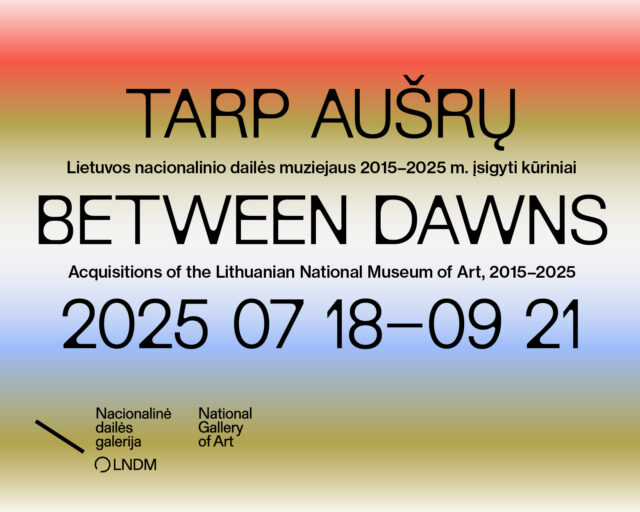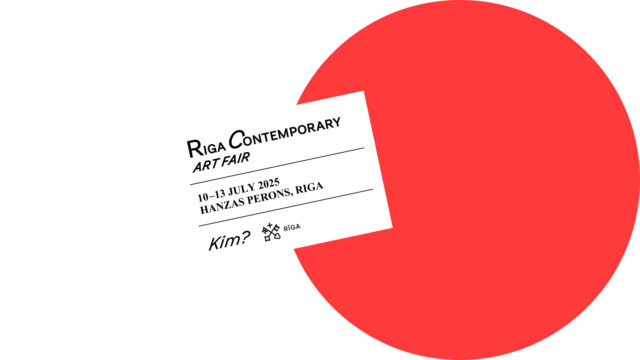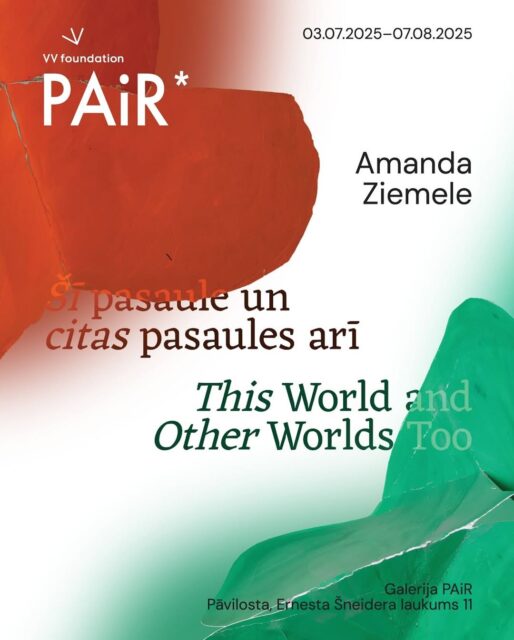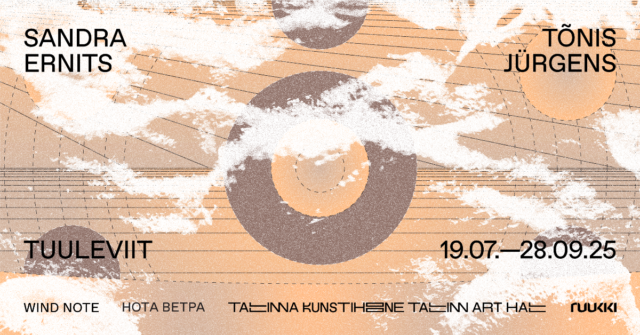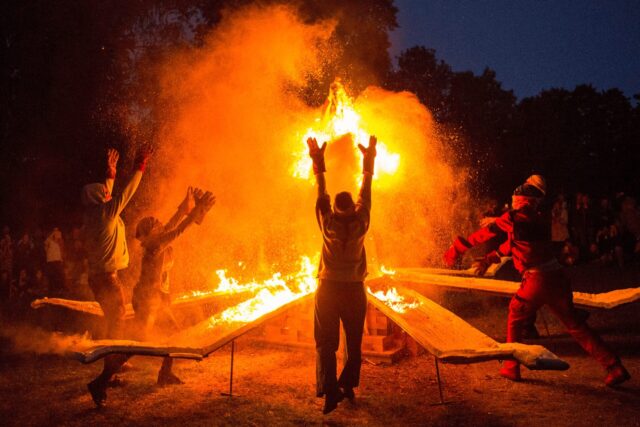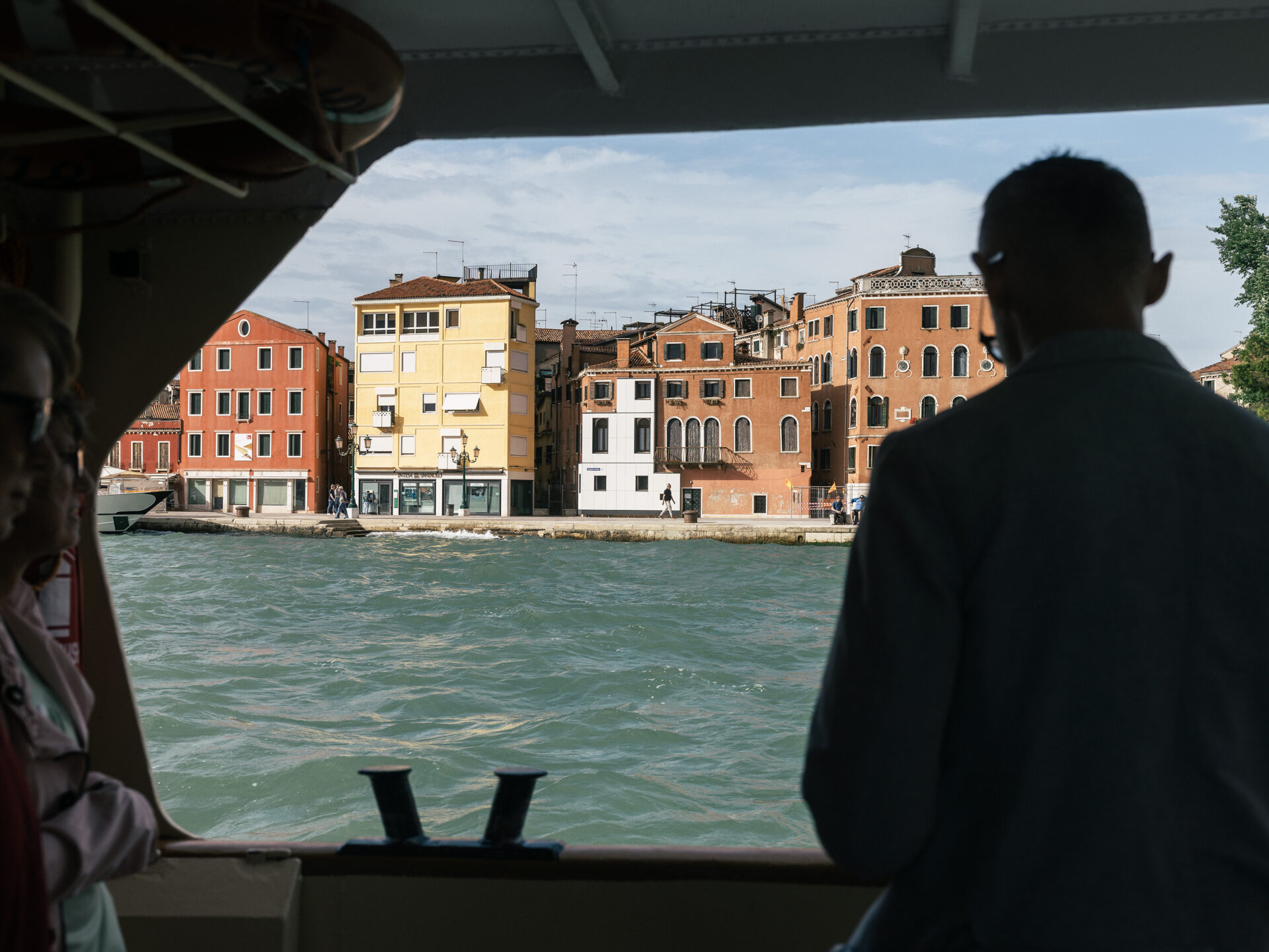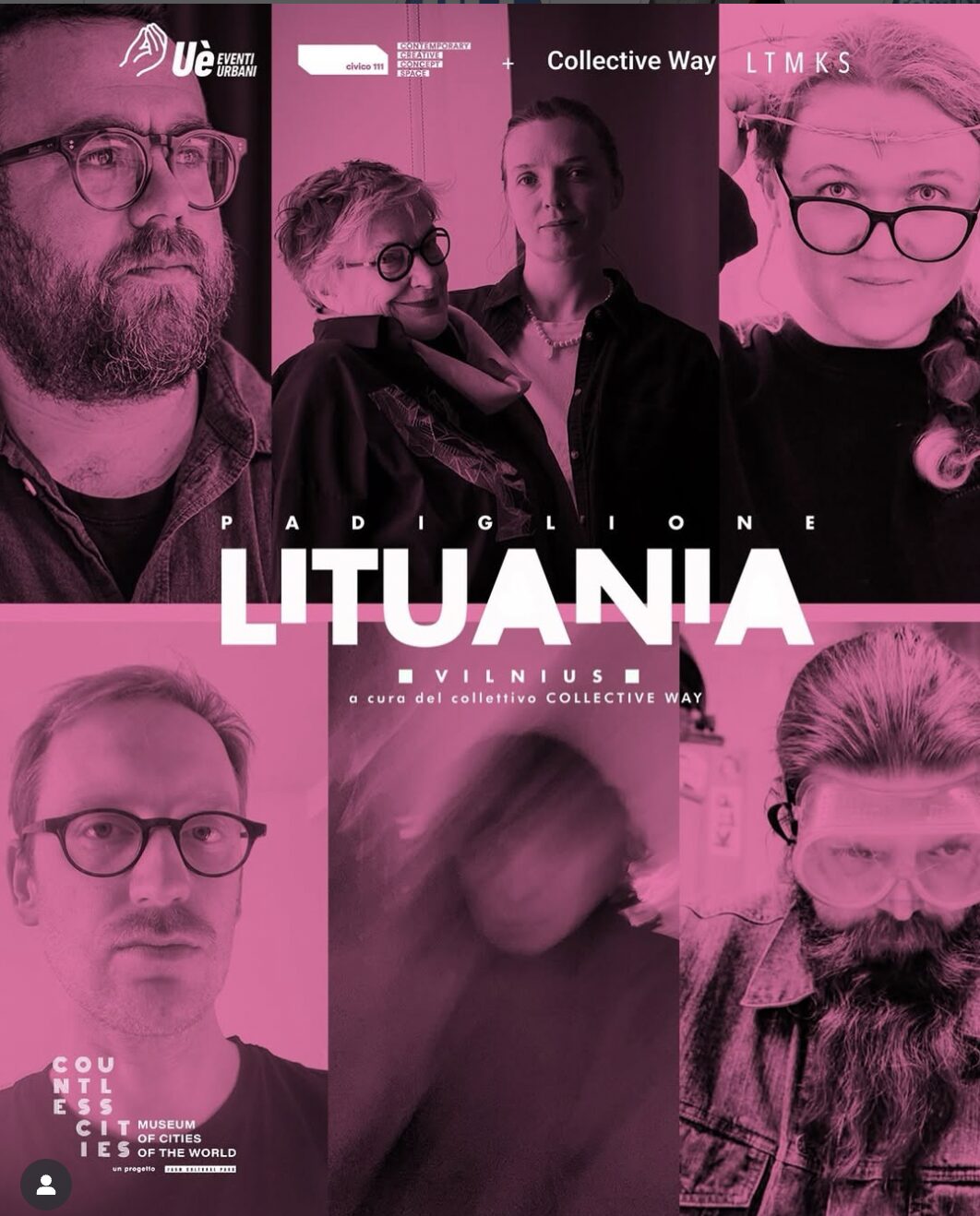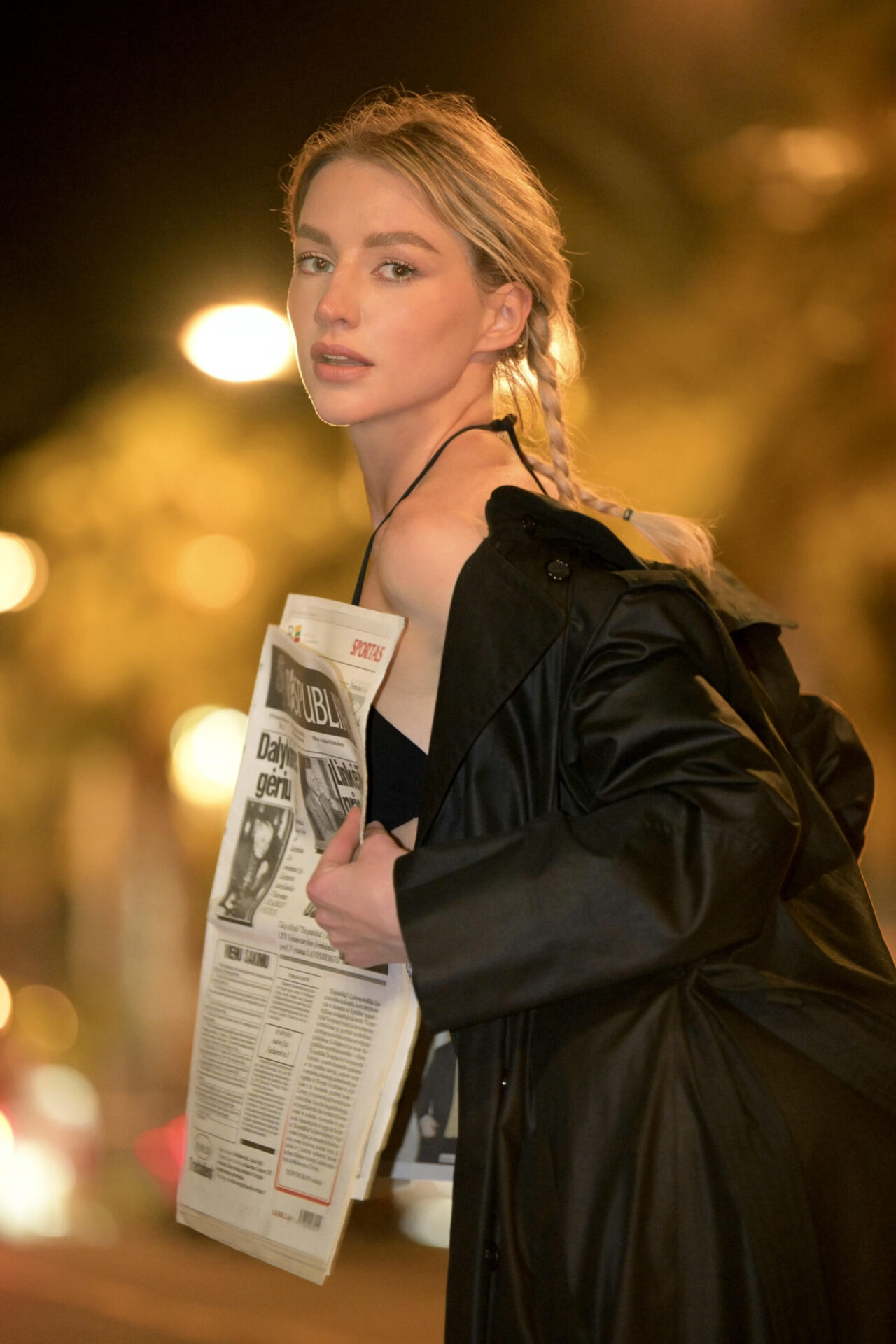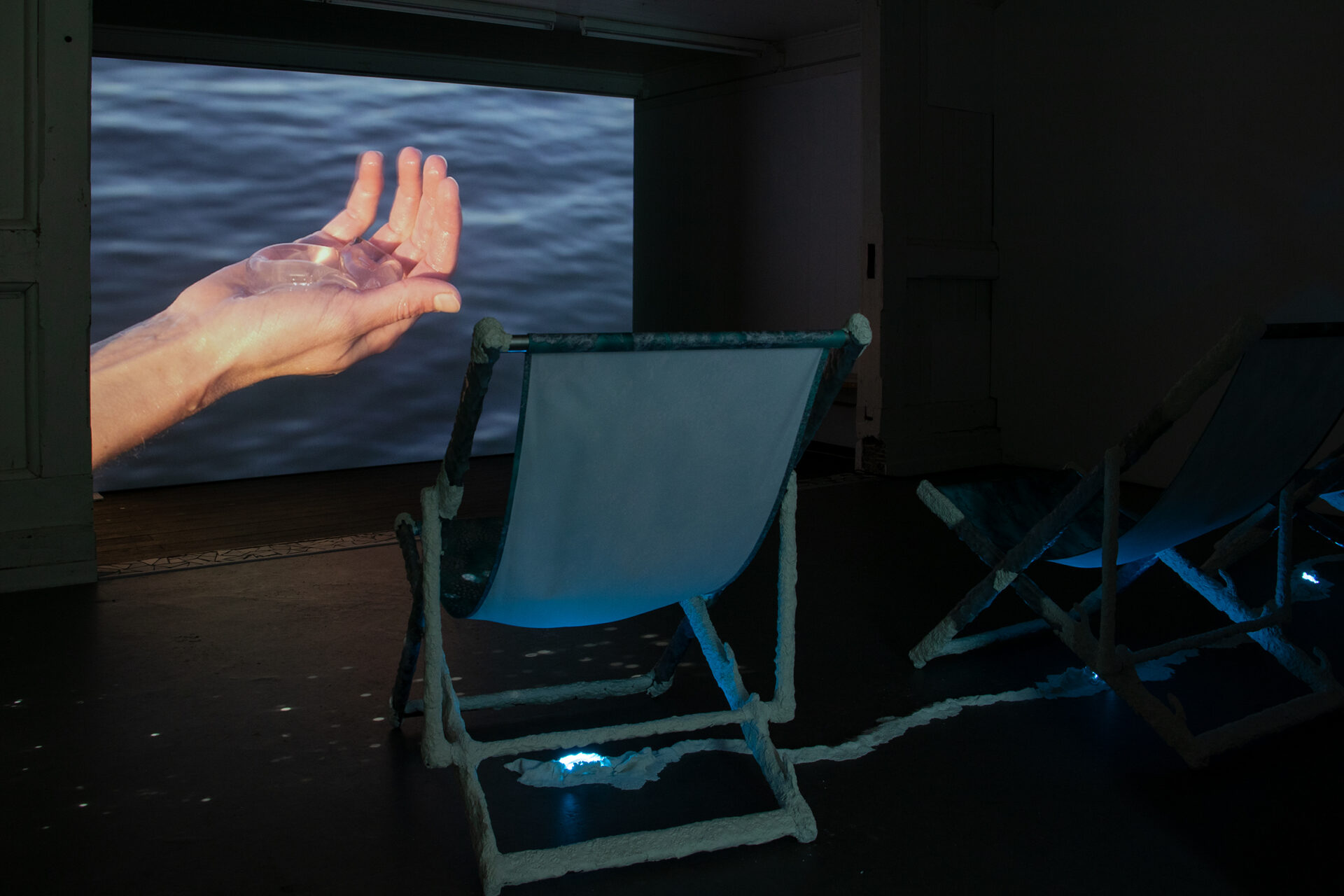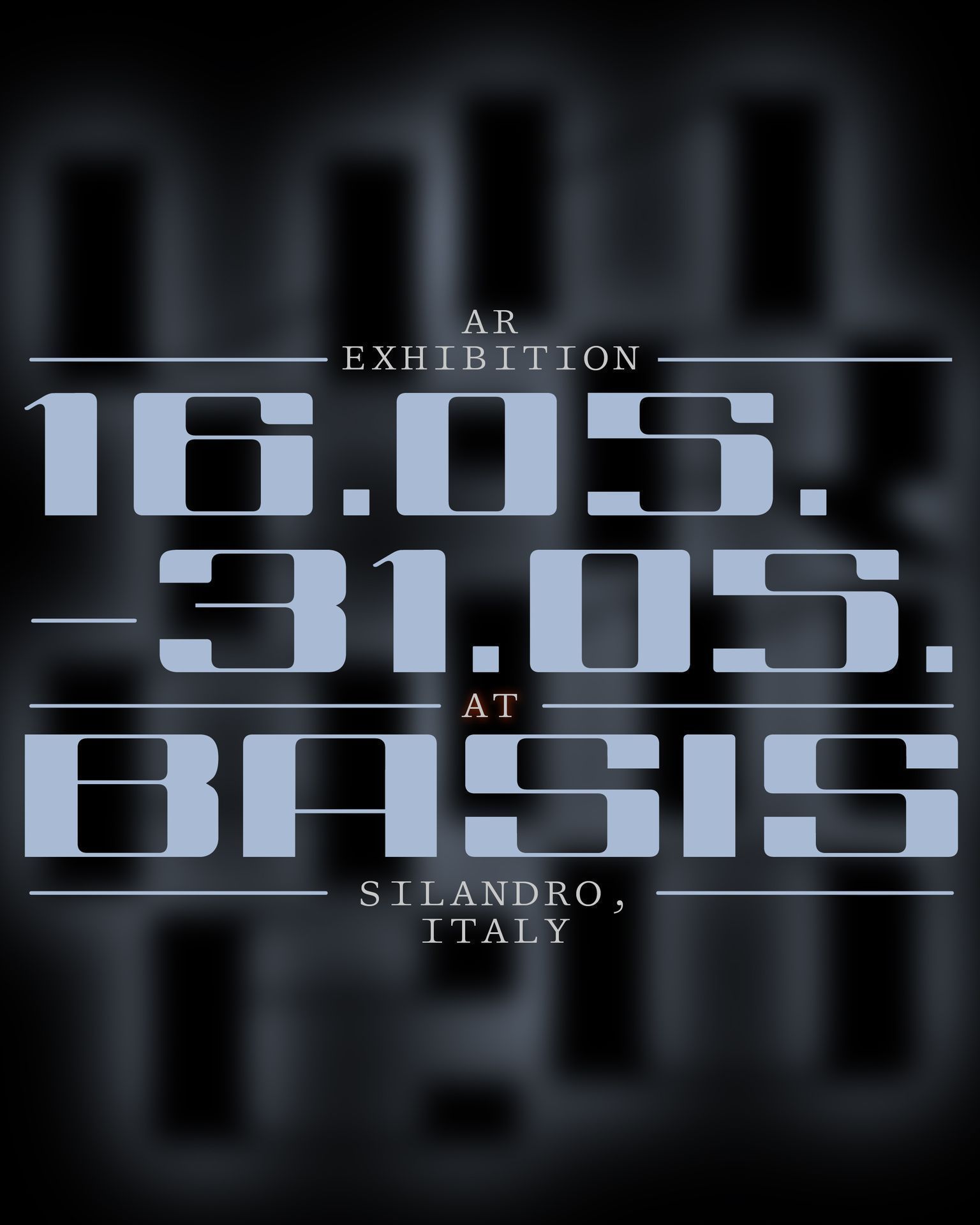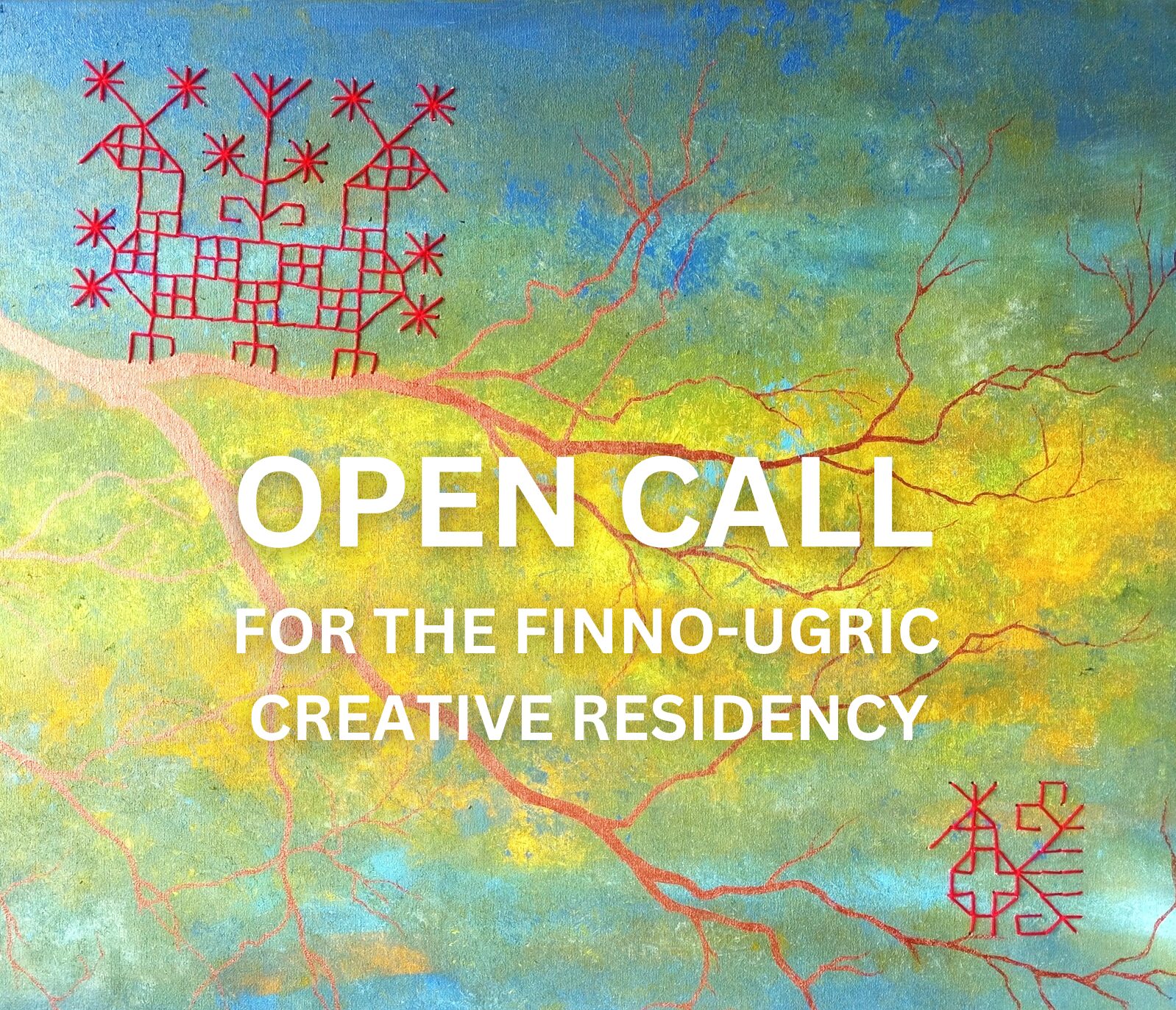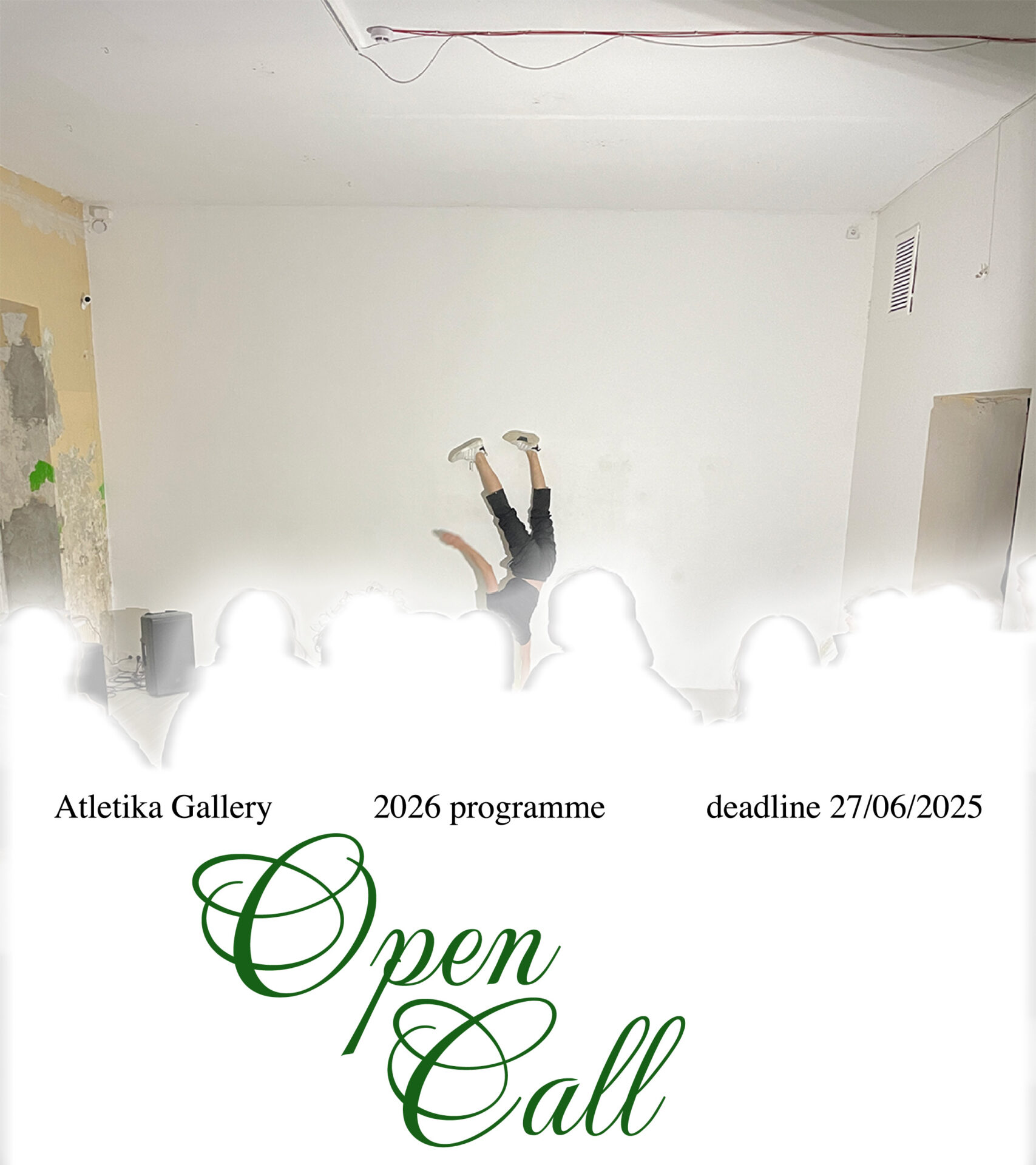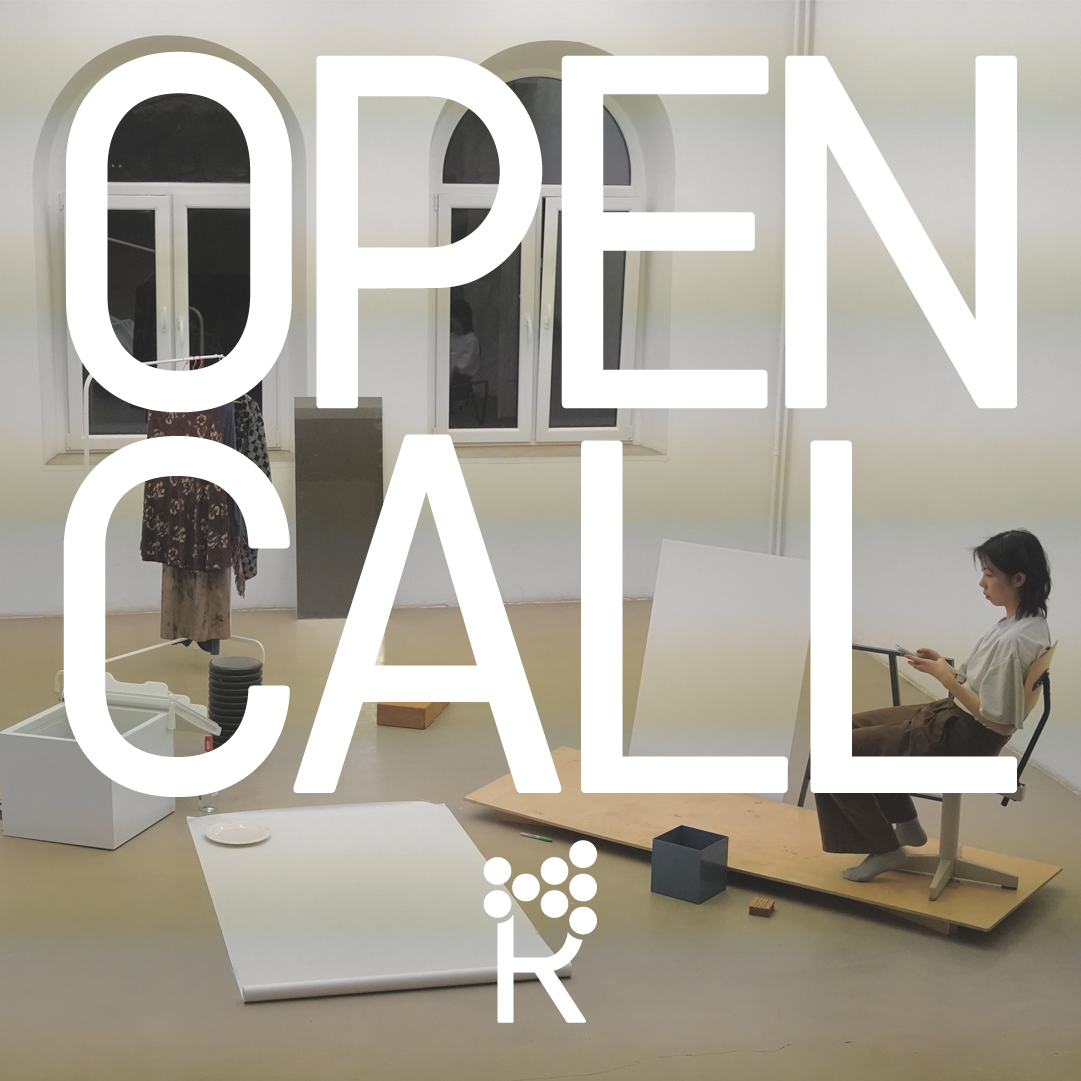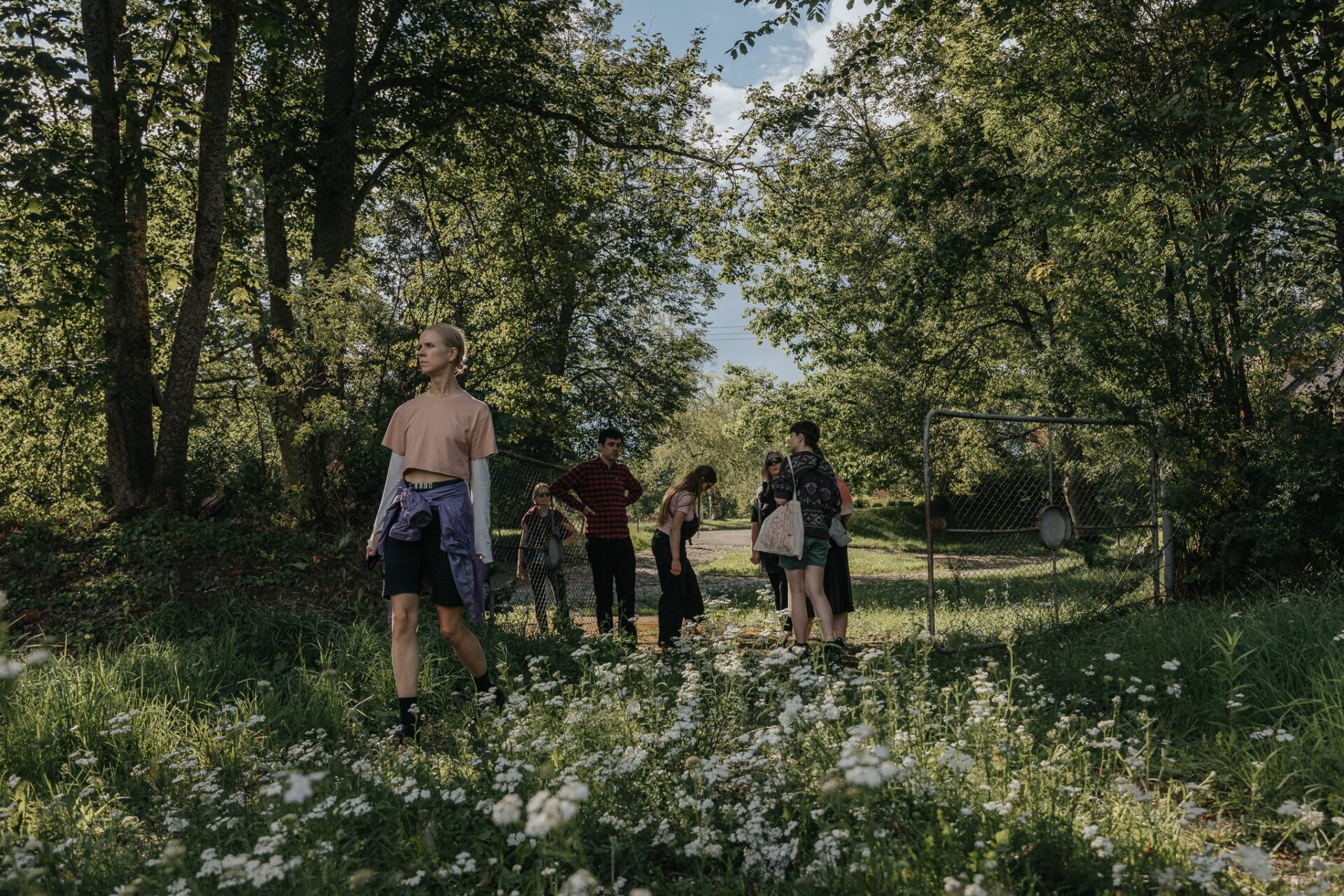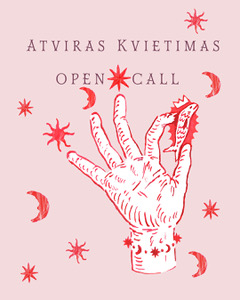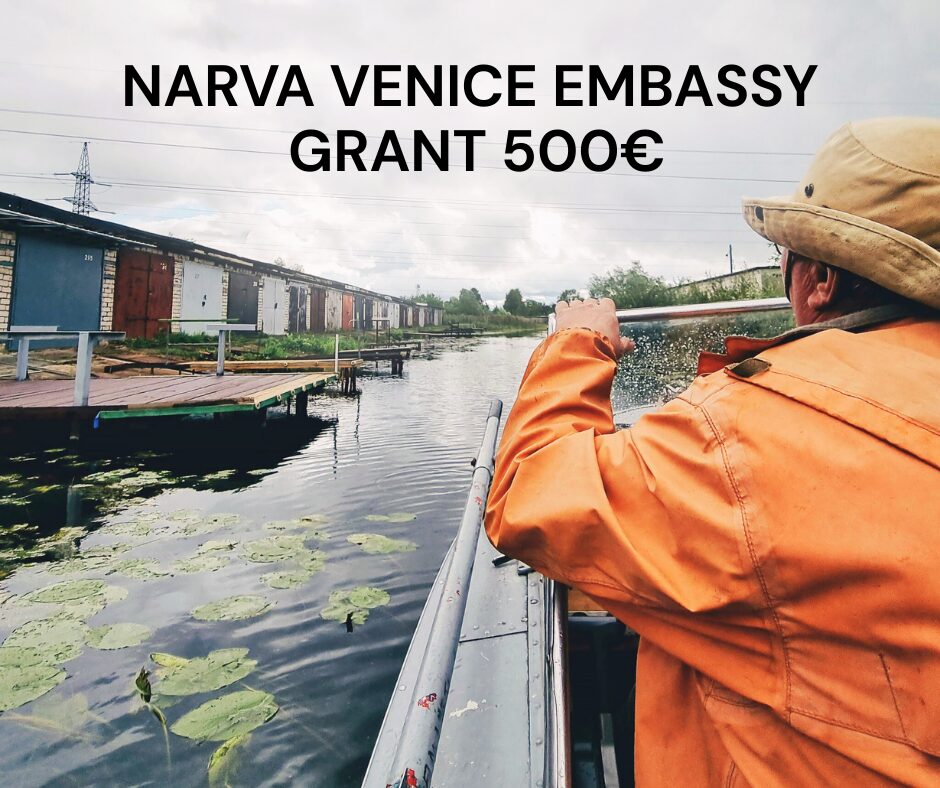‘Man is a flower that should be burnt,’ wrote the American poet Anne Sexton in her poem ‘After Auschwitz’. This imagery invites reflections on the relationship between the freedom of individual existence and collective tension. These lines served as an indirect gateway for me into Gerda Paliušytė’s solo exhibition ‘Lipstick’, showcased at the ‘Editorial’ art space until 13 April. The unfolding dialogue between poetic vision and visual art pieces facilitates a reevaluation of how individual aspirations are woven together with community values and the cultural context, and how this interplay generates new meanings and layers of identity.
The monumental installation ‘Untitled’ (2024) serves as the philosophical core of the exhibition, around which myriad interpretations and meanings orbit. The flexibility of its form and its organic essence challenge traditional views on the relationship between materiality and metaphysics, endowing the artwork with ontological depth. The curved structure, seeming to have arisen naturally from the ground, represents an existential truth, the collective reality of our existence, which is not chosen, yet urges us to independently find meaning in our lives. Conversely, if the notion that birth is random arises from personal experience, it is essential to acknowledge that from the perspective of our parents and ancestors it was a conscious choice. This highlights the dual nature of our existence: personally, life might appear as an enforced phenomenon, yet when viewed more broadly, each of our lives reflects cultural and historical continuity.
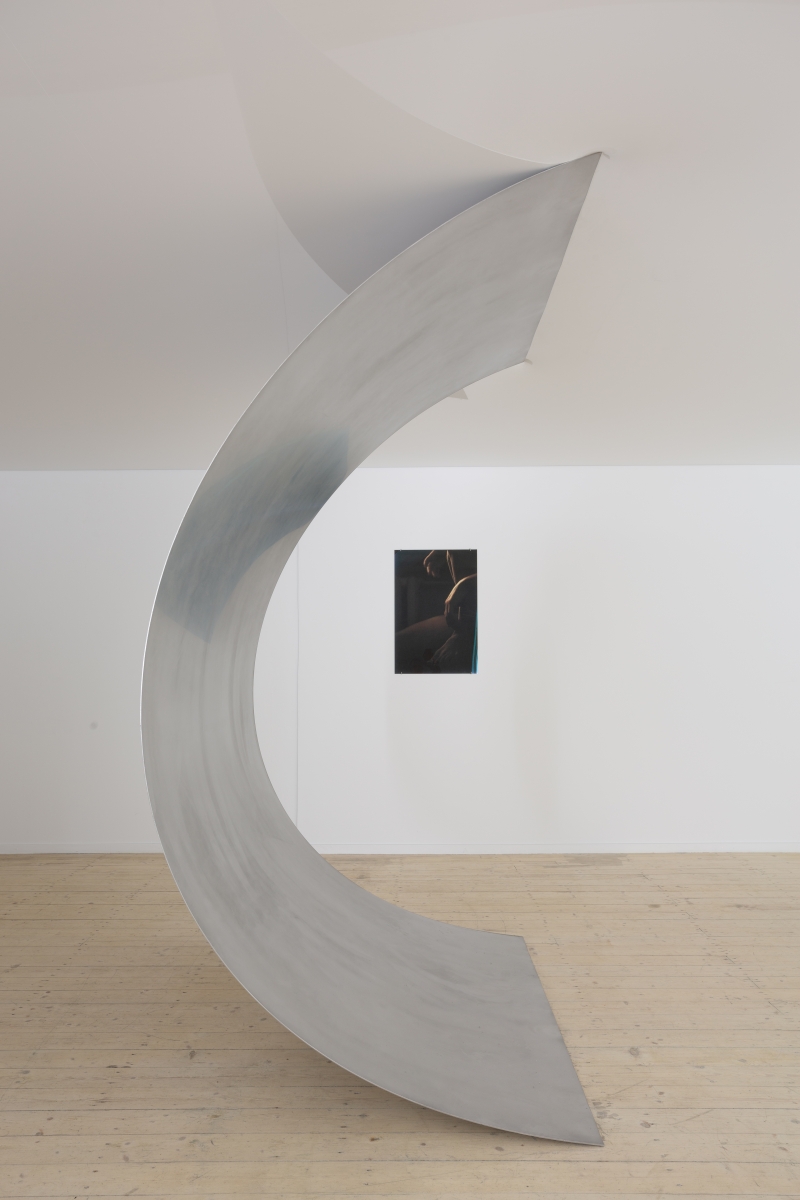
Gerda Paliušytė, Untitled, 2024. Curved stainless steel panel, 360 x 170 cm, glossy stretch ceiling, 50 m2
The central installation in the exhibition, ‘Untitled’, serves both as an artistic expression and a philosophical inquiry materialised in space. It poses questions about our perception of existence in this world, the significance of our relationship with the environment, and the degree to which our personal choices are autonomous versus dictated by external forces. It challenges us to consider whether we are perpetually bound by environmental constraints, or if there remains a potential to overcome and realise our true capabilities. The tension between the desire to manifest our uniqueness and the need to adhere to societal expectations, along with navigating internal desires versus external limitations, shapes visitors’ engagement with the space. While moving around the installation, we retain our autonomy, yet it powerfully reminds us that personal freedom is a continuous negotiation with the environmental shapes and social codes surrounding us.
The metallic surface of the installation invites reflection on subjective experience and desire, not merely as an internal, personal state, but also as an external object. The form’s resemblance to lipstick not only symbolises desire, but also the aspiration to express oneself, forming identity through visual transformation. However, the cold, industrial texture masks this desire, serving as a reminder of the suppression enforced by behavioural codes and norms that restrict personal freedom and expression. This juxtaposition creates a paradox between external allure and internal constraint. As Simone de Beauvoir highlighted in The Second Sex, lipstick is not only a personal beauty ritual, but also an element in the construction of social identity. It becomes a symbol that embodies both seduction and a declaration of power, seen through the lens of cultural norms and expectations of femininity.
The photographs in the ‘Boys’ series, displayed on the surrounding walls, offer a contrasting perspective, revealing fragments of human anatomy that prompt viewers to contemplate our collective existence. Despite our physical similarities and shared characteristics, each detail remains distinct. This underscores the notion that although we belong to a larger entity, every individual choice and experience holds a profound significance. Rather than mere snapshots, each photograph in the series represents an event, capturing the dynamism of the moment. The arrangement and composition of the bodies convey the creative act itself, articulated through the interplay of tension and relaxation, the delineation of muscle lines, and the interplay of shadows. These images probe the limits of the male form and its interaction with the surrounding environment, challenging the ways in which male and female bodies are objectified, and how the viewer’s gaze can transform them into aesthetic entities. In this context, the body is presented as a malleable substance, its identity shaped and reshaped by both time and space.

Gerda Paliušytė, Blue Flowers, 2024. Two flexible OLED screens, 7.8 inches
This transformation of the body and identity in photography mirrors recent technological advancements. Research by scientists from China and the USA has demonstrated that fingerprints can be reproduced from the sounds produced when touching a screen. This revelation about our biometric data highlights the fact that bodies transcend mere aesthetic objects: they are dynamic carriers of data capable of being scanned, analysed, and even reconstructed. It shows that our physical presence can be decoded and transformed into digital information, heralding new challenges for privacy, security and identity preservation. In this scenario, the body is transformed into a medium that can be digitised, replicated and altered, assigning new significance to bodily identity. Within this framework, the artist’s creations echo Zygmunt Bauman’s notion of liquid modernity, where identity is not static, but continually shifting and adaptable to changing conditions.
In the ‘Blue Flowers’ series, the morphological features of plants are transformed in an even more voyeuristic manner, with images of blue-painted roses and orchids displayed on curved screens. Digital technologies and their components are not concealed within the artworks, but are instead highlighted as aesthetic elements, openly exhibiting their shape and functionality. Technology seems almost lifelike, whereas organic forms appear synthetic. The embodiment and intimate relationship with the environment of the blue flowers gain a new significance in the light of the myth that blood is naturally blue, turning red only upon interacting with air through oxidation. Our collective fantasies, errors and poetic misunderstandings seek clarification at the intersection of the body and the environment. Technological advancements, such as the ‘Apple Vision Pro’ augmented reality glasses, push the limits of physicality and further blur the line between genuine experience and its technologically engineered simulation. Our understanding of reality is ever-evolving and multifaceted, mirroring our engagement with the external environment and our capability to reinterpret it via technological means. Yet occasionally the reflection unveils a more authentic reality.
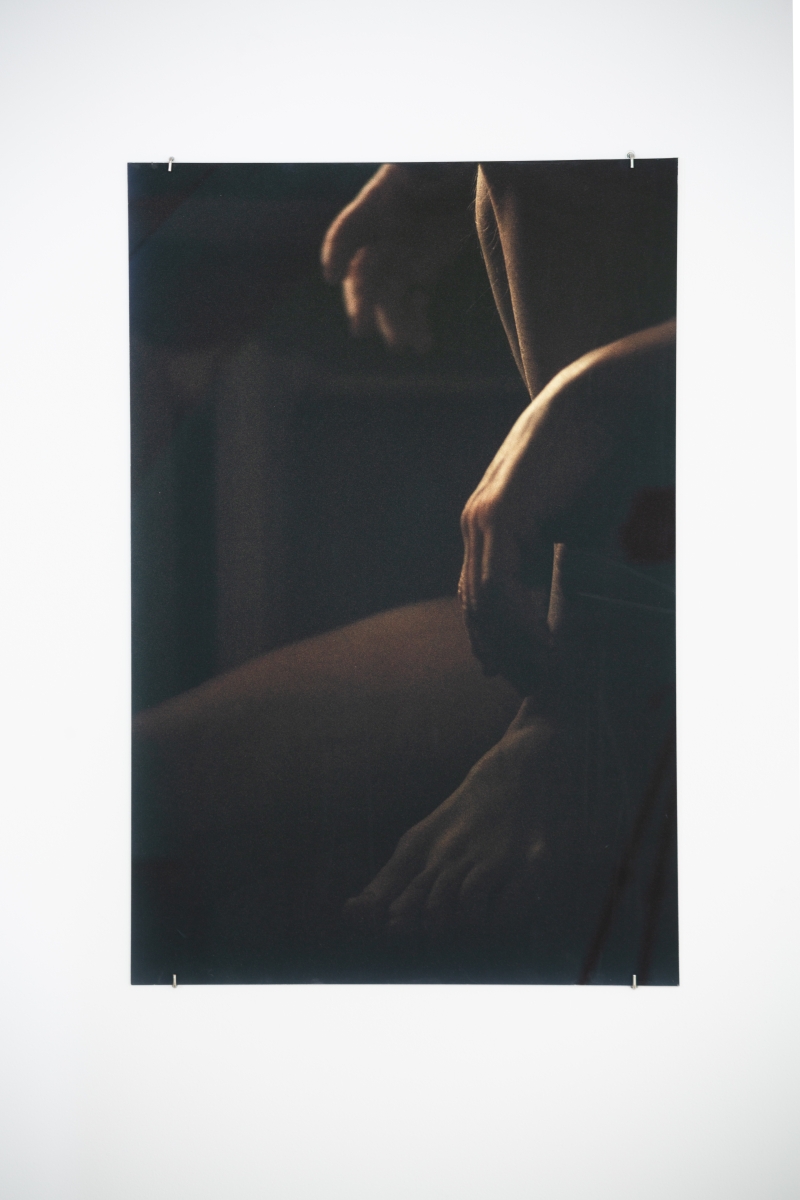
Gerda Paliušytė, Guys, 2023. Giclée print, 50 x 75 cm
Photography: Editorial
